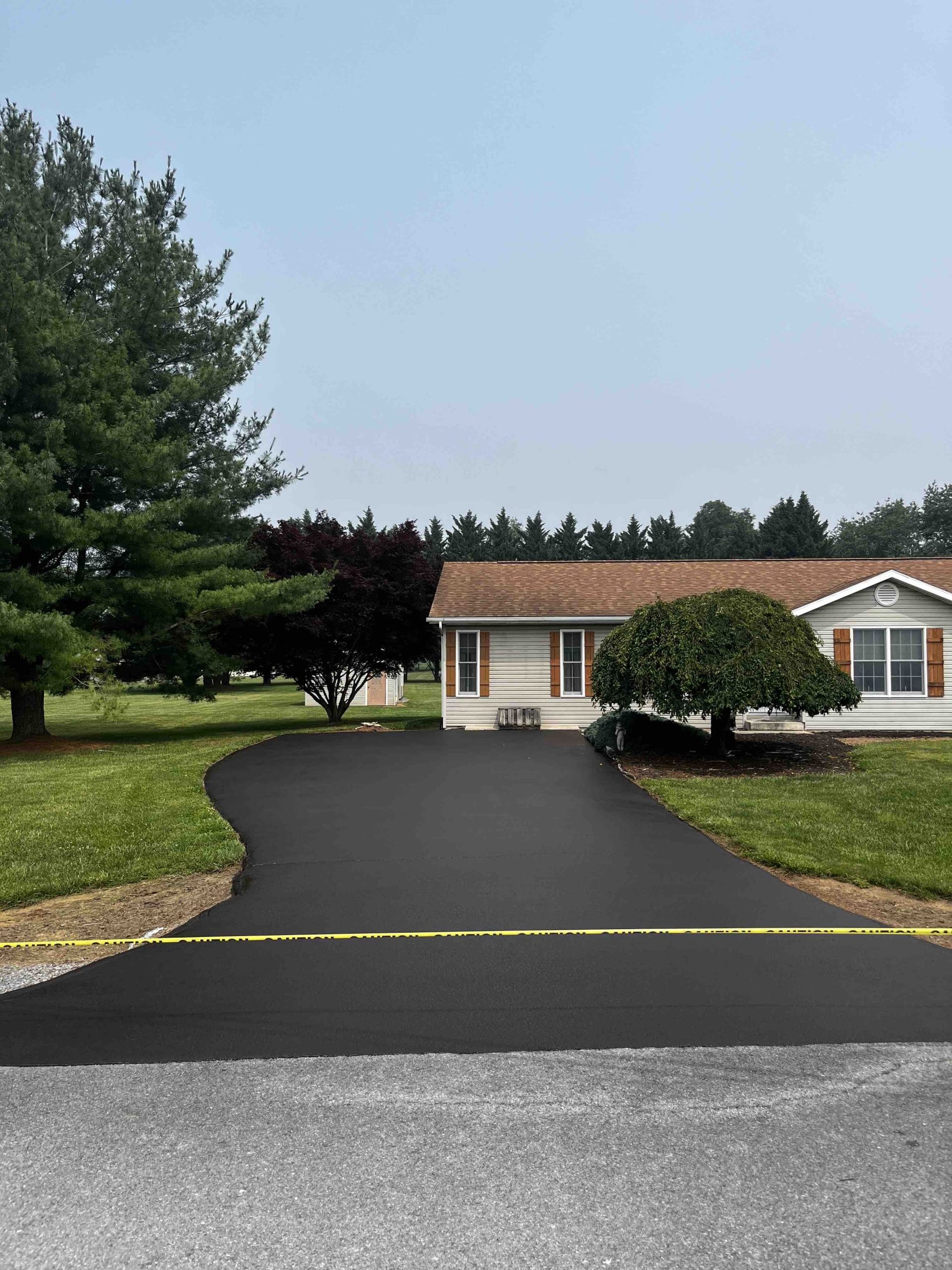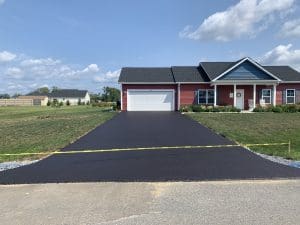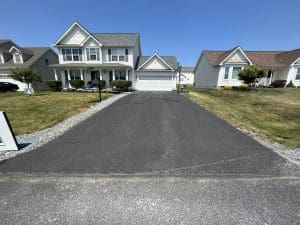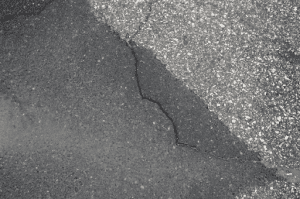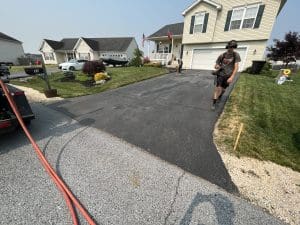Sealcoating vs. Resurfacing: Which is Right for Your Asphalt Surface?
At Top Gun Sealcoating, we understand the importance of maintaining your asphalt surface to extend its lifespan and keep it in top condition. Two primary methods of asphalt maintenance are sealcoating and resurfacing. In this comprehensive guide, we’ll delve into these two options, highlighting the differences, their advantages and disadvantages, and key factors to consider when deciding between them. We’ll also address common questions that homeowners often have about sealcoating and resurfacing.
Understanding the Basics of Asphalt Maintenance with Top Gun Sealcoating
Before exploring the specifics of sealcoating and resurfacing, let’s start with a fundamental understanding of asphalt and why regular maintenance is crucial. Asphalt, also known as blacktop, is a resilient blend of stones, sand, and liquid asphalt cement. Its durability and flexibility make it a popular choice for various surfaces, including roads, driveways, and parking lots.
Despite its durability, asphalt is not immune to the effects of time and the elements. Sunlight, rain, snow, and heavy traffic can lead to deterioration, resulting in cracks, potholes, and a worn-out appearance. Regular maintenance is essential to prevent further damage and ensure that your asphalt surface remains both functional and aesthetically pleasing.
What is Asphalt?
Asphalt comprises aggregates like sand, gravel, and crushed stone held together by asphalt cement. It’s favored for road construction due to its durability and ability to withstand heavy traffic loads. Asphalt’s flexibility allows it to expand and contract with temperature fluctuations, reducing the likelihood of cracks and damage. However, over time, asphalt can deteriorate from exposure to the elements and vehicular weight.
The composition of asphalt is critical. The size and type of aggregates used influence strength and durability. Larger aggregates provide stability, while smaller ones create a smoother surface. The ratio of aggregates to asphalt cement is meticulously calculated to achieve desired properties and performance.
Asphalt cement, derived from petroleum, acts as the binder that holds the aggregates together. It’s a sticky, black, and highly viscous liquid mixed with aggregates at high temperatures, creating a cohesive and durable asphalt mixture. The quality and grade of asphalt cement can vary based on intended use and climate conditions.
Importance of Regular Asphalt Maintenance with Top Gun Sealcoating
Regular maintenance is vital for the longevity and performance of your asphalt surface. Addressing minor issues early prevents them from becoming extensive and costly repairs. Well-maintained asphalt surfaces enhance property aesthetics and provide a smoother and safer driving experience for motorists.
Sealcoating, a key maintenance practice, involves applying a protective sealant to the asphalt surface. This sealant acts as a barrier against water, sunlight, and other elements, extending the surface’s lifespan. Sealcoating also revitalizes the asphalt’s appearance.
In addition to sealcoating, regular inspections and repairs are crucial for preserving the asphalt’s integrity. Cracks and potholes should be promptly repaired to ensure a safe driving surface. Cleaning and sweeping help remove debris and prevent dirt and pollutants from degrading the asphalt.
Consider climate and weather conditions when planning maintenance. Extreme temperatures, freeze-thaw cycles, and heavy rainfall can affect asphalt. Proper drainage systems and regular maintenance mitigate environmental effects, prolonging asphalt life.
An In-depth Look at Sealcoating by Top Gun Sealcoating
Sealcoating is a preventive maintenance measure, involving applying a protective layer over existing asphalt. Typically, coal tar or asphalt-based emulsions are used. Sealcoating primarily protects against UV rays, water, and chemicals, while restoring the asphalt’s black color and aesthetics.
The Sealcoating Process
Sealcoating starts with thorough cleaning, removing dirt, debris, and vegetation. Cracks and potholes are repaired before sealant application. The sealcoat is applied using a sprayer or squeegee, forming a protective barrier, extending your asphalt’s life.
Pros and Cons of Sealcoating
Sealcoating offers several benefits. It protects against UV rays, reduces water penetration, enhances aesthetics, and prevents crack formation. However, it’s not permanent and requires reapplication every few years to maintain effectiveness.
Exploring Resurfacing with Top Gun Sealcoating
Resurfacing is a more extensive asphalt maintenance option than sealcoating. It involves applying a new asphalt layer over the existing surface, typically necessary when the existing asphalt has severe cracks, potholes, or structural issues.
The Resurfacing Process
Resurfacing starts with removing deteriorated or damaged asphalt layers, creating a smooth base. A new asphalt layer is applied and compacted with heavy machinery, providing a fresh surface.
Pros and Cons of Resurfacing
Resurfacing offers a long-lasting solution for deep cracks, potholes, and structural issues. It enhances appearance, provides a smooth driving surface, but is costlier and more time-consuming than sealcoating. It’s ideal for surfaces with substantial damage or nearing their lifespan.
Factors to Consider When Choosing Between Sealcoating and Resurfacing with Top Gun Sealcoating
Several factors affect your choice:
- Condition of Your Asphalt Surface: Minor issues favor sealcoating, while extensive damage requires resurfacing.
- Budget: Sealcoating is cost-effective, while resurfacing addresses underlying issues, offering long-term savings.
- Longevity: Sealcoating requires periodic reapplication, while resurfacing provides a more durable solution.
Frequently Asked Questions About Sealcoating and Resurfacing with Top Gun Sealcoating
Can I Do Sealcoating or Resurfacing Myself? While DIY products exist, professionals are recommended for proper application, ensuring longevity and optimal results.
How Often Should I Sealcoat or Resurface My Asphalt? Frequency depends on climate, usage, and asphalt condition. Sealcoating is typically done every 2-3 years, while resurfacing occurs every 15-20 years or when significant damage arises.
In conclusion, both sealcoating and resurfacing are effective asphalt maintenance methods. Sealcoating is preventive and offers protection and visual improvements. Resurfacing is extensive, addressing damage, and providing long-term benefits. Consult with professionals at Top Gun Sealcoating if you a have any questions or concerns about whether to make an informed decision, ensuring your asphalt performs at its best for years to come.
